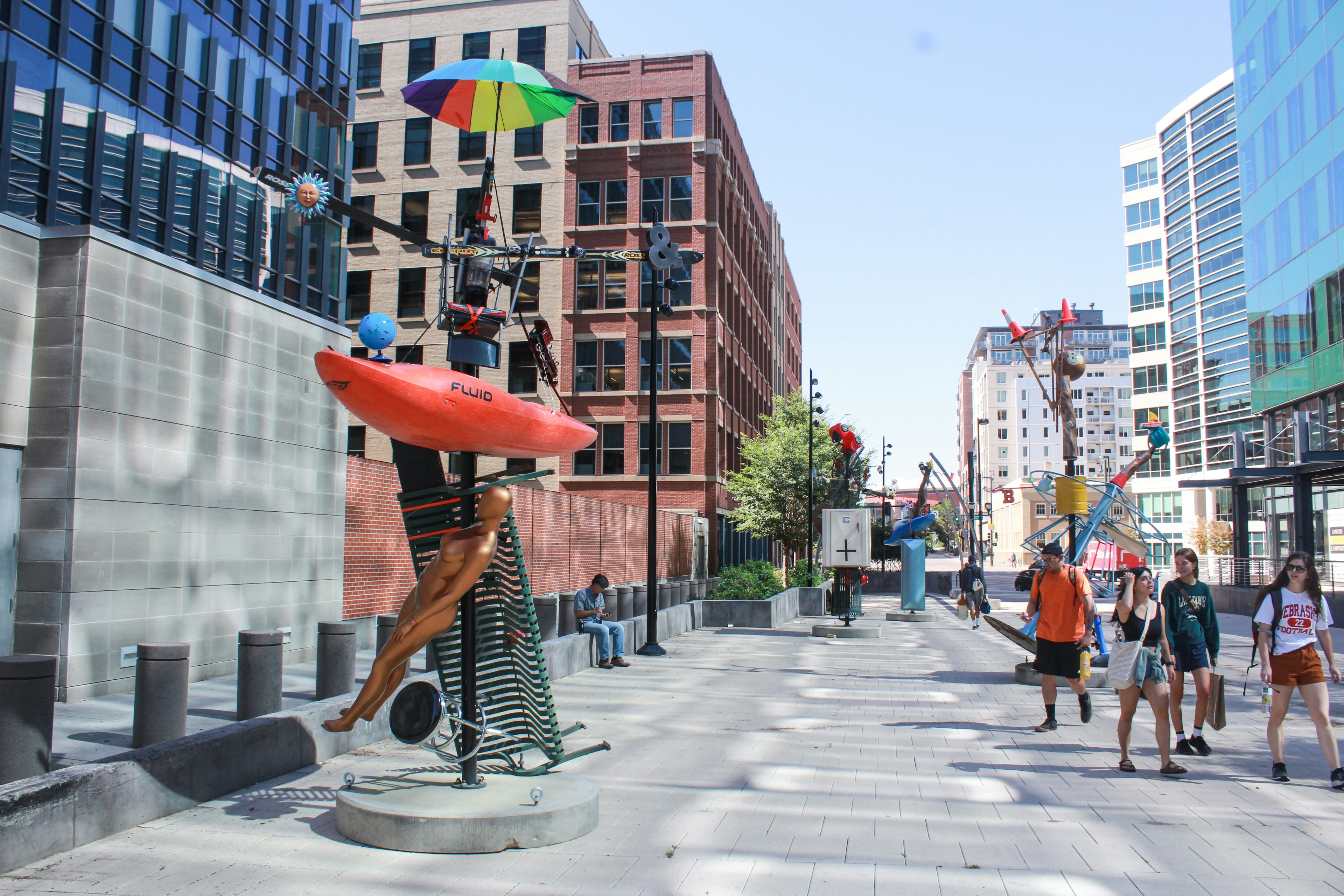Gabriel Rico on his Public Art Installation in Downtown Denver

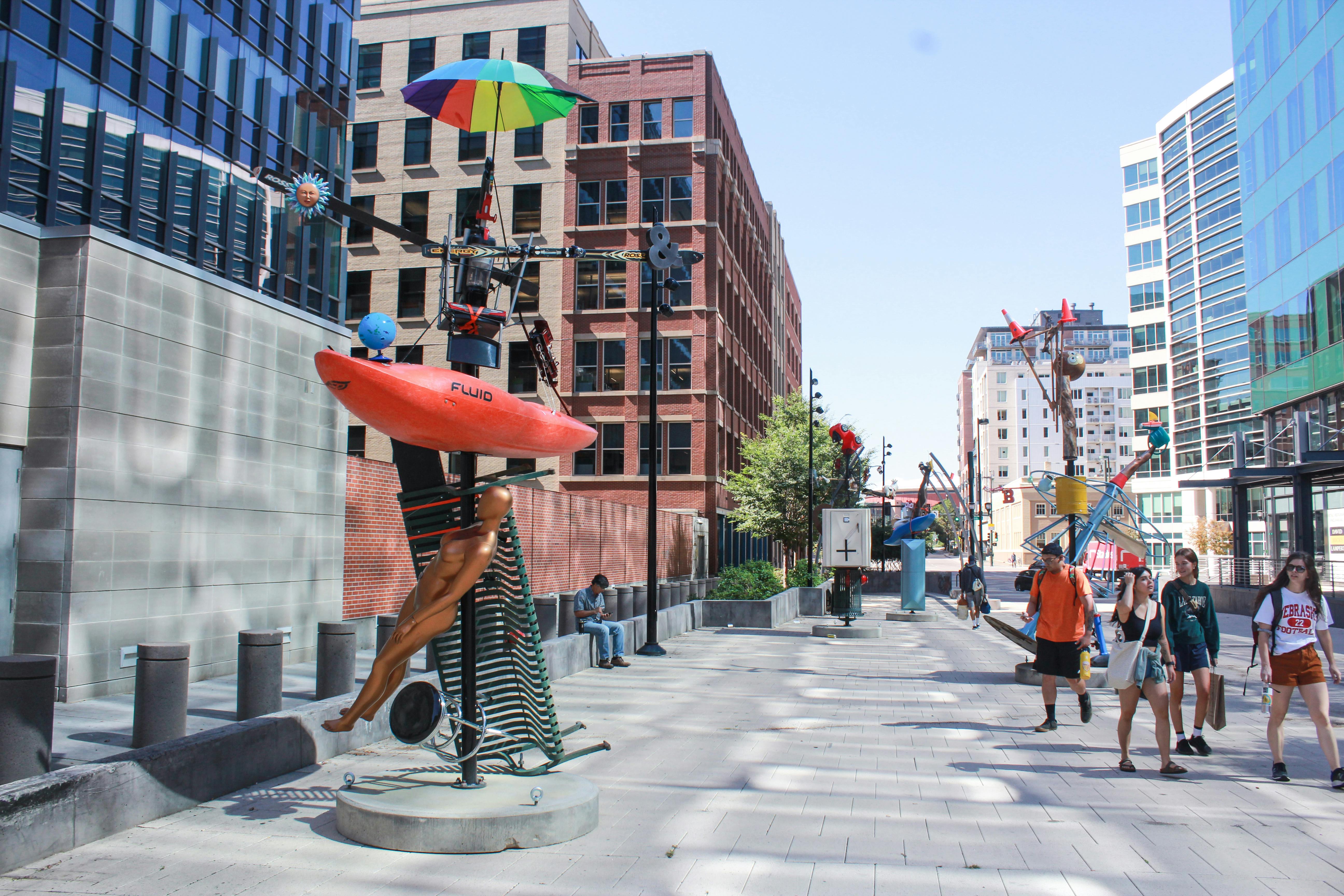

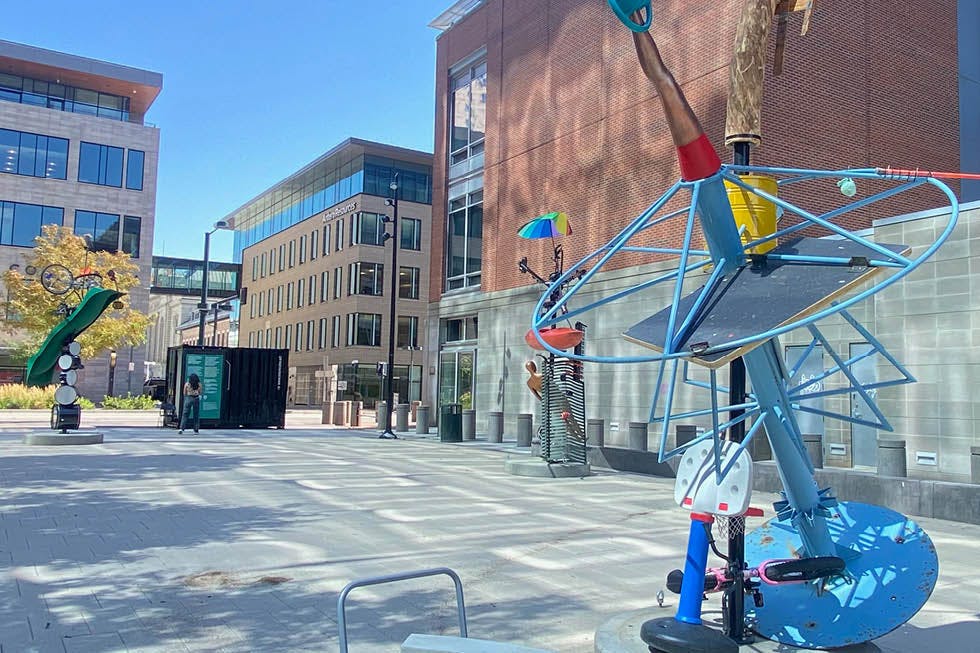
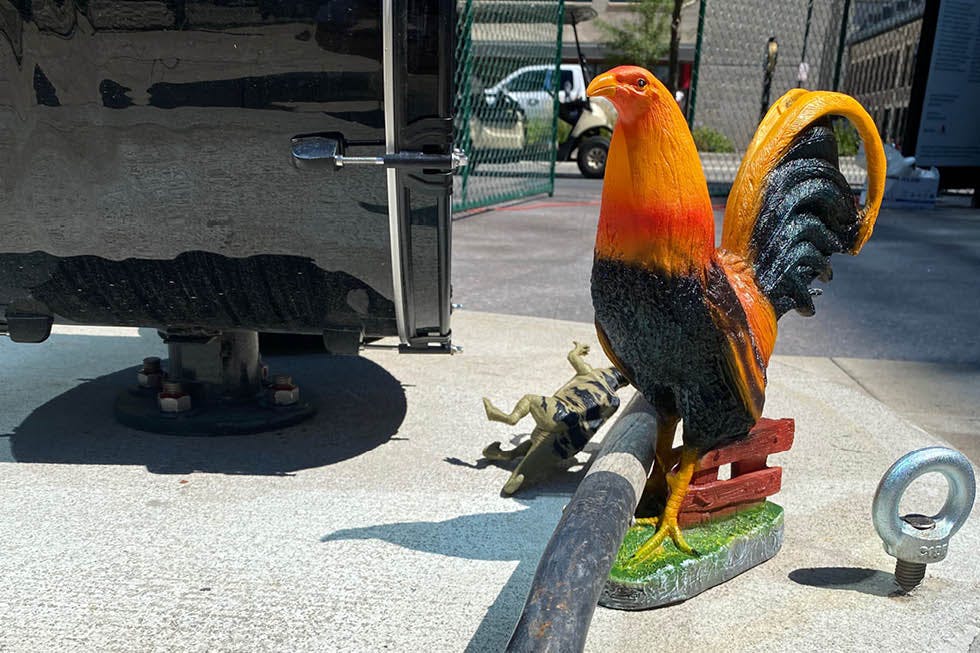
![Image caption: [L]: Gabriel Rico, "Tótem", 2013, donated objects. [R]: Detail, Gabriel Rico, "Tótem", 2013, donated objects.](https://images.prismic.io/black-cube/80cedafe-2b84-40f5-a41a-316771b48d8e_Rico-BelgianTotem.jpg?auto=compress,format)
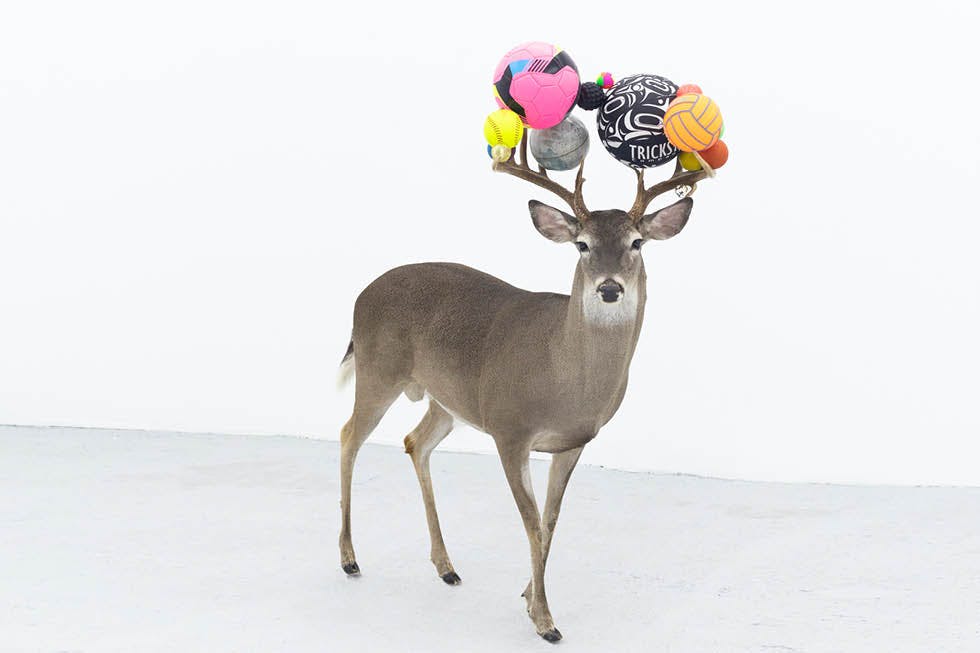
An interview with Guadalajara-based artist Gabriel Rico on the opening of La inclusión de mi raza, a temporary, outdoor exhibition of 5 totemic sculptures in downtown Denver's Tail Tracks Plaza.
Gabriel Rico on his Public Art Installation in Downtown Denver
Cortney Lane Stell: Thanks so much for taking the time for a short interview in advance of opening your project, La inclusión de mi raza (The inclusion of my race), in downtown Denver, Colorado. I'd love to start by framing your art practice for our audience. Can you explain the framework in which you work and your key interests?
Gabriel Rico: I consider myself a believer in matter, an ontologist with a heuristic methodology.
CLS: So, to unpack that, you are interested in investigating the nature of being, in its essence. And, you are interested in exploring the expansion of how we classify the world by employing mental shortcuts that allow people to solve problems and make judgments quickly and intuitively—bypassing traditional mental frameworks. Practically, you use readymade objects in unusual ways to help us consider how we structure our world and how we could see it differently?
GR: My work is developed in the zone where ideas materialize and crisscrosses with another, like a thought experiment. I use deconstruction and recontextualization as methods in my work to continue my investigation to question knowledge, the origin of information, and highlight the fragility of space. I try to create pieces that fragment the contemporary human being and relate to the geometric imperfection in nature.
For example, I use technology and scientific models as metaphors for our collective memory. I have always been fascinated with the philosophical analogies and scientific disciplines, and my work takes influence from the sciences that study form and space. My work is a reflection on the nature of the pieces from the materials used to produce them and their arrangement in the final composition.
CLS: It's been such a delight to work with you over the past several months on this large-scale public art installation at Tail Tracks Plaza. The work is multilayered and includes a complicated series of five totemic sculptures as well as the augmented reality (AR) component. Can you share the meaning behind the title of the work, La inclusión de mi raza (The inclusion of my race)?
GR: With this installation, I intend to make evident how race, ethnicity, or other labels commonly have the effect of generating a judgment about another human being. I want to call out how we are connected, as part of the same human race. Further, I would like to suggest to viewers how we, as a species, are part of the natural kingdom, which we depend on totally. I am not suggesting that we overlook the rich history of our race or ethnicities.
CLS: I find your title very provocative considering that this project is a partnership with the Biennial of the Americas and that historically, Biennials commonly categorize artists by nationality.
GR: The first time I started working with the totemic figure as a principle to work with different objects, I realized at some point that objects were the key to open my work to possible collaborations with other people. After that, the title came to my mind and I found it perfect to be used precisely in this type of work, due to the principles of inclusion and collaboration, fundamentals that I personally consider basic to achieve social development. I think seeing ourselves as one helps us build a better functioning relationship with nature and also to rebuild the damaged relationship that exists among humans. The title functions as an open invitation to interpret the work, but also to participate in its creation.
This work is also rooted in the concept of “Biosphere”, developed by the Ukrainian scientist Vladimir Vernadsky.
CLS: As I understand, Vernadsky developed a complete theory about the biosphere of the planet Earth. In several monographs and dozens of papers, he explored the limits of the biosphere, calculated the amount of cosmic energy that is absorbed by the biosphere through trapping of solar energy by chlorophyll of green algae, determined cycles of chemical elements passing through living organisms of the biosphere, and more. He saw the importance of defining a complex, holistic, conceptual approach to our planet, which seems very significant today in light of the global ecological crisis. I can see how you find it interesting to explore both the wholeness, recontextualization, and expansion of our limited view of our world. You also mentioned this space of augmented reality (AR) helping reframe our world. Can you expand on this idea?
GR: Yes, the work includes an AR layer. In general terms, after having spent more time in front of the computer during the last two years compared to the previous ones, I could say that technology has opened the door for contemporary society to access a much more universal vision that contemplates the relationship between human beings, but also with nature.
This technology allows us to digitize and sculpt ideas that will nurture the aesthetics of the installation in a formal but kinetic way, which provides a new level of interaction between the visitors and the installation. In the AR layer, the idea is to model 4 totemic animals (a mountain lion, fox, bear, and moose) that are important to the traditions of the regional tribes. In addition to these, there will be 4 of the most obvious physical layers that compose the human body: a skeleton, which supports the body; a cardiovascular system, which allows the irrigation of blood throughout the body; a nervous system, which allows the conduction of electrical and sensory stimuli in the body, and a muscular system, which allows the movement of the body. These separated figures emphasize a central theme in my practice: the fragmentation of the contemporary human. I use these 4 basic body systems to reinforce and evidence that, in general physiological terms, all humans are the same.
CLS: I'd like to move onto the physical, sculptural element of the work. What is the significance of the objects that make up each totem?
GR: The installation consists of 5 totems made by using objects obtained through an open call inviting the inhabitants of Denver to donate, bolstered by a selection of items obtained in a local flea market and second-hand store. The totem has been an artistic object that represents sacred animals or natural spirits, it is a way to express and define the identity of tribes that live and have lived in the Colorado territory, such as the Utes or the Apaches, to mention a few.
As humans we are always looking for an order to try to catalog the world around us, we do it with nature and with socio-cultural creations. The order that a totem has is one that obeys the shape of the trunk from which the wood is obtained to carve it, a vertical order. Even though the horizontality of the ground where this is installed permeates with equality the moment in which some beings stop to look at it, the totem with its aesthetics that point to the sky is also an egalitarian element. My intention is that these 5 totemic sculptures represent the complexity of contemporary social culture by using objects related to everyday life, expressing a sense of equality for all people who choose to collaborate and the public that sees them.
CLS: Can you tell me about the origins of this project, as it relates to the outdoor sculptures you produced in Belgium? This project differs from its predecessor both in scale and size, but also in materiality. In both instances, the materials used to create the work was culled from the community through an open call for donations. What material differences do you see in the two communities you've installed this work, and from your perspective can anything be deduced from that?
GR: As you mentioned, the biggest difference between the first version of this type of sculpture and this last version that is going to be presented in Denver, is the scale; this is primarily due to the time elapsed between the two projects (almost 10 years) but the incredible thing is that the dynamics for its construction and the result, aesthetically speaking, are still loaded with meanings and provide pieces that emerge as an exercise that enables a specific anthropological analysis. Based on the objects donated in both cases (St. Nikklas, Belgium and Denver, Colorado) you can imagine the origin of them and even the place where these pieces were made. Objects have the power to tell us stories and this project tries to mix them up without losing the coherence attached to their diversity of form and the material they are made of.
CLS: Revisiting the augmented reality (AR) aspect, can you explain your attraction to this medium and how you've recently integrated it into your practice?
GR: In the past, I worked with taxidermy because I was interested in the specific moment in which the spectator encounters a something familiar and strange. The brain at first supposes an impossible situation because a deer with baseballs and soccer balls in its antlers is almost impossible to find in the middle of a white cube. The idea that this animal is alive crosses the mind for a moment. It is as if these objects (taxidermy animals) came to life for a few moments. It is precisely where AR seemed to me to be a tool that could give me the opportunity to start working with animated animals, in addition to the infinite possibilities to create digital worlds that interact with the material world (which, for me, strengthens the production of art at this moment in history).
CLS: This project is a major technological development in your practice. Not only are there many complex, digital human and animal figures in this installation, but we have also developed an app that you will use beyond this project. Can you explain your vision for the app?
GR: Technology gives us the opportunity to take interaction with others to the next level and this open window is the reason why I decided to develop the app. It allows my work to interact with more people on a more accessible level and in real time. All of this without having to visit a place where my physical work is displayed. In addition, the app engine will work so that projects like this can exist in a virtual-reality space in which users can interact with a computer-generated environment and other users. When this project ends physically, the possibility of activating the AR in this place will continue, which gives rise to the creation of a plot with a complexity that grows exponentially from what happens beyond this square where this project will be presented. It's like creating free high-quality art, like a public sculpture.
